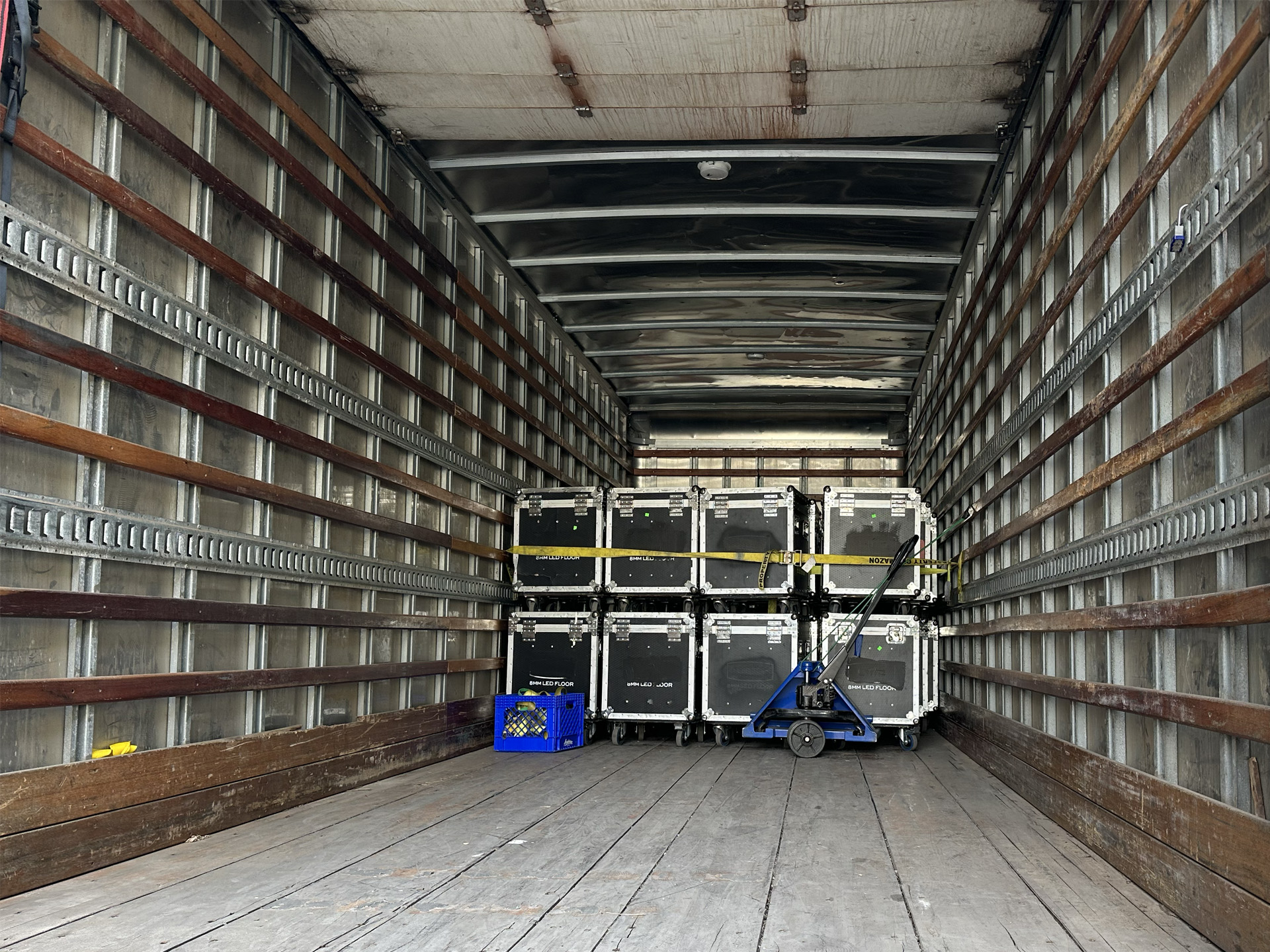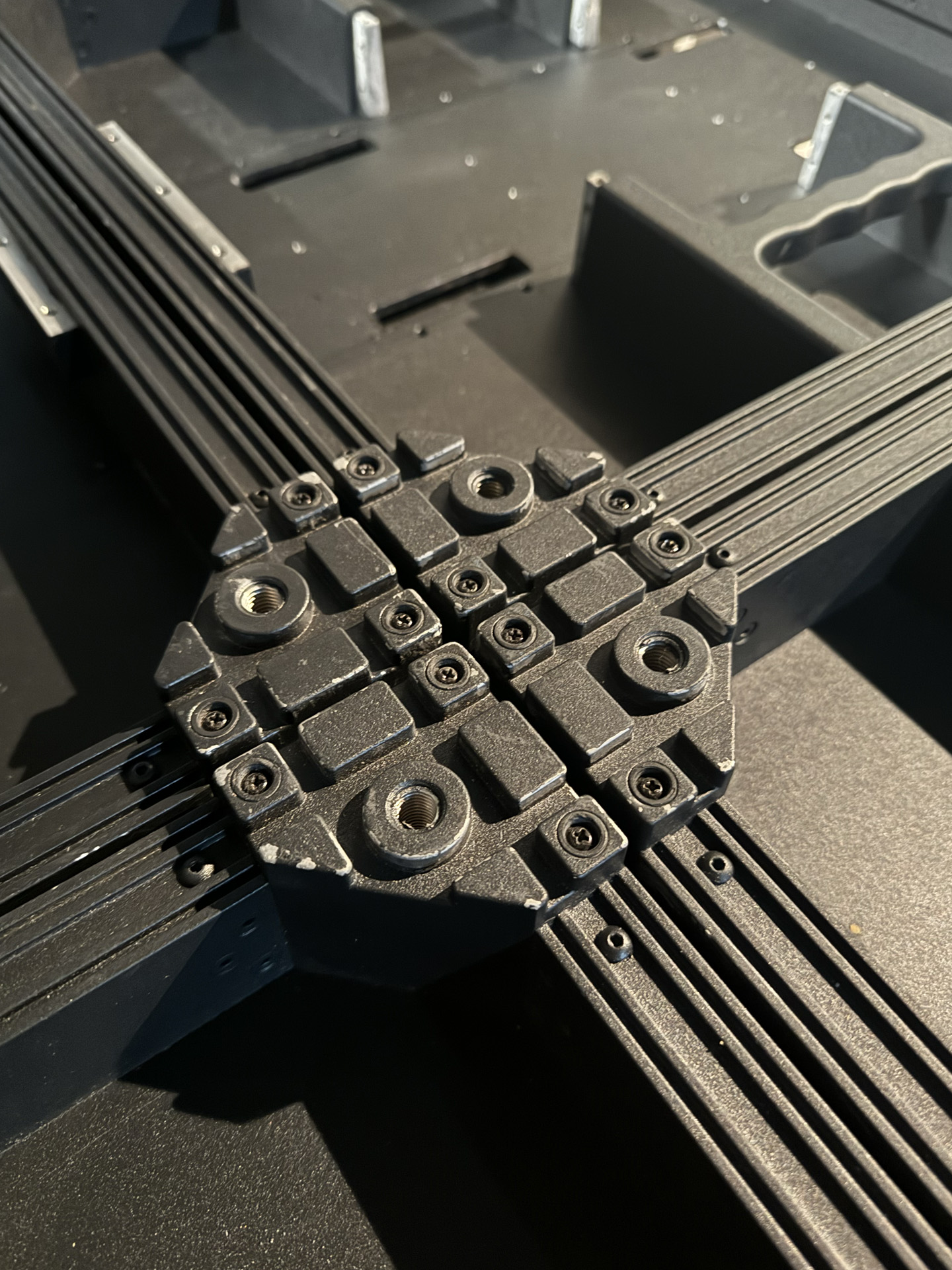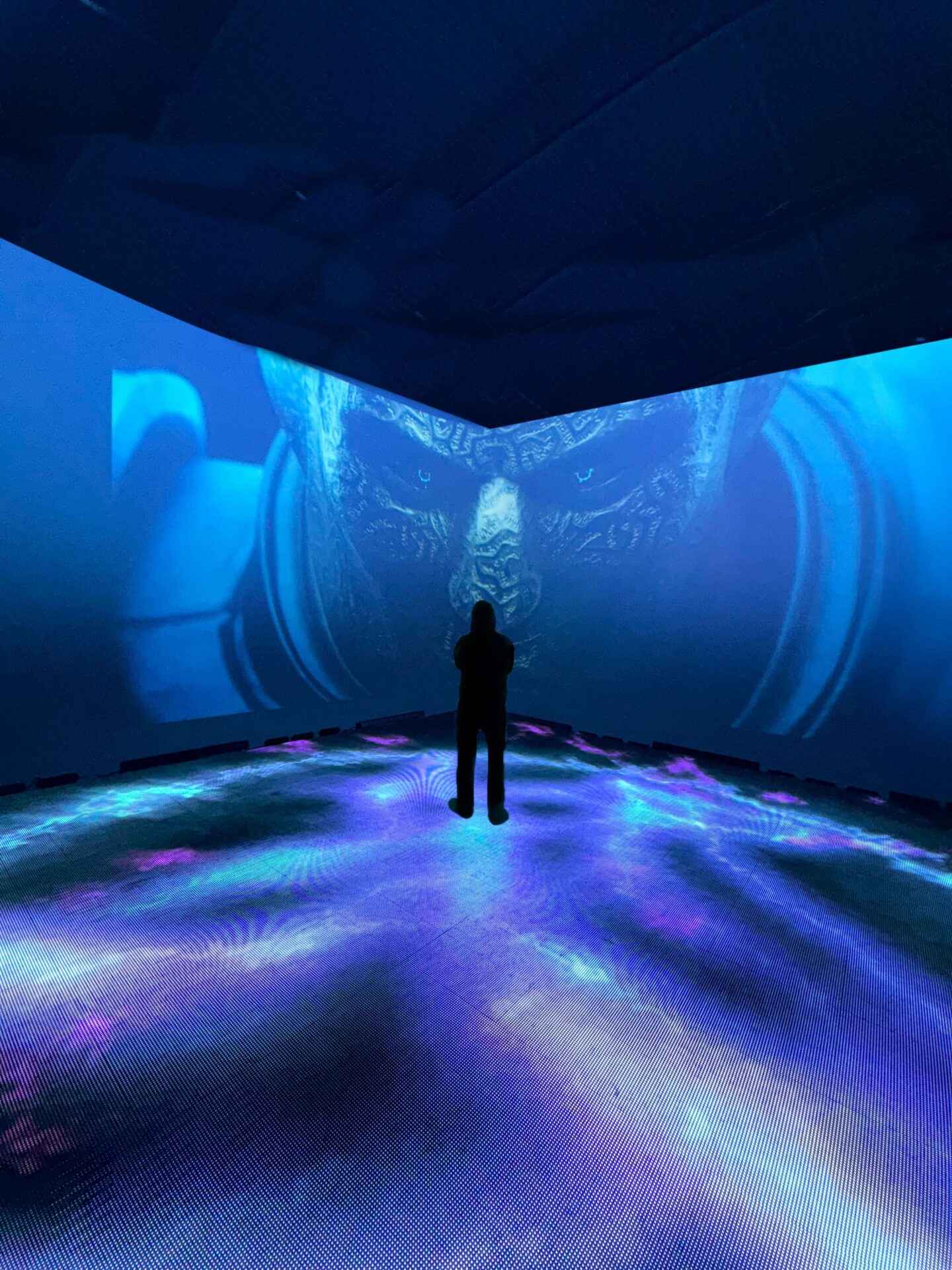If buying Dancy McDancefloor was an exercise in seizing opportunities as they appear, getting Dancy working has been an exercise in determination and luck. This massive LED floor arrived in 68 cases, 4 tiles to a case. There were no cables, configuration files, LED processors, or instructions. Just a few hints scribbled on labels on the cases and on the tiles themselves.
The first step was to determine some technical details about the LED tiles – we knew that they were from Uniview but we did not know what receiver cards they used. After removing an ungodly number of screws from one tile, we were able to see that Dancy has receivers from another Chinese LED company named Linsn. From here we started what turned into a long string of WhatsApp conversations with Uniview, Linsn, and multiple LED resellers.
Securing cables to feed power and video to the tiles required going on Alibaba and submitting RFPs based on our best guesses for which cables would be needed. This was where the first mistakes were made, as it was later discovered that the ethercon ports on Dancy are non-standard, and the manufacturer we chose to make them did not ship on time which added multiple weeks of delays as we waited for the incorrect cables to arrive.
While the LED tiles were clearly labeled as taking 220v power, we were unsure if they might work on 110v based on the labels on their power supplies. So while we secured a 220v power source we tried to test them on 110v, which began a short period where we did not know if the tiles were dead or just unable to power up at lower voltage. Thankfully, we got a small transformer that could power a few tiles at a time and we were able to get them to boot up into a test pattern.
Once the tiles were working at a basic level, we were able to test the theory that a Linsn sender card would work with these LED tiles… but without a config file there was not much we could do other than power them on and poke around the Linsn software. This was where our luck truly changed, as our main contact at Uniview took a personal interest in our mission and generously spent time searching for any information that he could find on our 11-year old LED floor.
The search for the correct versions of the Linsn software and hardware as well as the correct configuration for Dancy’s receiver cards ultimately led to a multi-hour video call with Uniview’s CTO and technicians in China, who were finally able to determine the correct configuration for the hardware we own. At last we could finally fully control Dancy’s tiles!
In parallel to the software configuration, we went on a hunt for more feet for Dancy (we got 150 in the auction but need 272 for a full floor), which led to a discovery that we were missing a critical piece: we did not have any of the metal plates that connect the tiles to each other and to the feet. This discovery led to us scouring the internet for any information on these plates that we could find, eventually ending with Chris creating our best guess at what they were in 3D and printing one out to test. When we sent a video of this test plate to Uniview to ask if they had any idea if it was correct, they realized that they had 300 of them in a warehouse in China, along with more feet. This was the second stroke of luck involving our new friends at Uniview.
The final piece of the Dancy saga was to figure out how best to get 220v power for all of the tiles. After a long and complicated journey to try every possible way of getting enough power at the right voltage, we finally got to test everything using a loaned distribution box from Kinetic Lighting. For the first time, we got to see all of Dancy light up and work, and got the immense relief of ending two months of increasingly dire attempts to get this floor working.
Now that we have the power, cabling, distribution, sender cards, config files, and knowledge to get Dancy McDanceface working, we can finally begin the journey of discovering how a massive LED floor can extend the screen and make Loud Movies as fully immersive as we have always thought they should be. Here’s to starting the real work, now that this beast is operational.





















